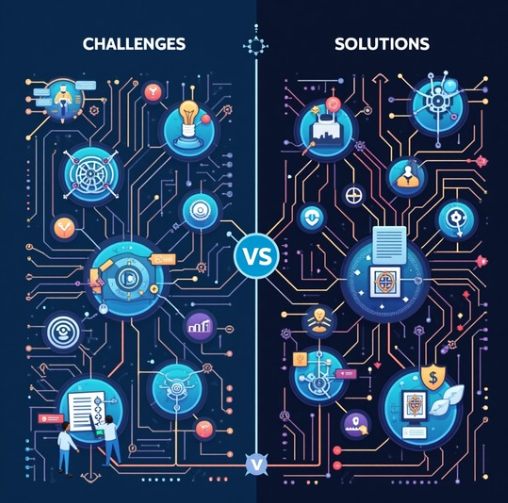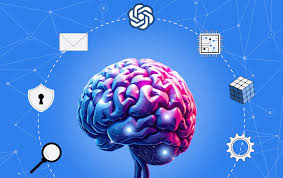Ethical Considerations in Testing Artificial Intelligence
Artificial intelligence grows fast in our modern society. Many industries use AI every day. In the middle of research and innovation, experts also work to test AI systems to guarantee safety and fairness. New ideas and careful studies help keep progress on track.
AI plays an essential role in many parts of life. Developers build systems that help in hiring decisions and facial recognition. The methods to test AI remain critical in finding hidden errors. Practical examples show how mistakes can affect real people.
In this blog, let us explore ethical considerations in testing artificial intelligence. We explain simple ways to test AI. We share methods that suit beginners and experts alike. Join us as we share clear ideas and practical points.
Understanding AI Testing
AI testing covers the training of models, the validation of outcomes, and systems deployment. It is crucial to test AI early and often to keep systems safe. Developers work hard to check each part of an AI system. They test AI under different conditions. Many teams now also use cloud platforms to enhance collaboration and testing accuracy.
A cloud testing platform helps in simulating actual user conditions. The process makes sure that results are trustworthy. Validation prevents bias from seeping into final decisions. KaneAI by LambdaTest is an AI-powered testing platform. It helps fast-paced QA teams by automating key tasks. These include test case creation, management, and debugging.
With KaneAI, teams can write and update test cases using simple language. This makes automation faster and easier.
The platform also improves test execution and data management with AI. This leads to better accuracy and reliable software delivery.
Errors in testing have led to biased hiring tools. Facial recognition systems have shown mistakes that hurt innocent people. Businesses and regulators now ask more questions. End-users demand fairness and transparency.
Each stakeholder must have a clear role. They must test AI with care and attention. The field depends on practical and honest work. Clear tests help avoid errors that may cause harm. Rigorous efforts help all parties stay safe and informed.
Key Ethical Considerations in AI Testing
A clear view of ethical concerns is essential for the proper use of AI in society.
Bias and Fairness in AI
A simple connecting sentence starts this section. Fairness matters a lot in all AI testing methods. Here are some key points:
- Data Bias Impact: Datasets sometimes show hidden unfair trends that harm certain groups. The models test AI on data that may repeat old errors. This bias can affect decisions in hiring and other social issues. Every test AI session must consider fairness in data collection and processing.
- Algorithmic Bias Effects: Algorithms can develop errors that show prejudice in results. The systems test AI by using methods that may favor one group over another. Developers must check all steps to avoid unfair outcomes. A careful review of algorithms is needed for safe use.
- Societal Bias Influence: Society brings old views that affect AI behavior. The ai tools for developers test AI under conditions that mirror society. It is important to note that these biases can enter systems during testing. Good practices make sure the final system is fair.
- Fair Testing Methods: Methods must focus on including diverse examples in every trial. Experts test AI with multiple techniques to ensure fair performance. Professionals must use various approaches to spot hidden errors in decision making.
- Regulatory Checks: Rules now exist that help check the fairness of systems. test AI activities are guided by clear guidelines. The checks protect people from unwanted bias. Authorities must watch testing procedures closely. Developers work hard to ensure fairness in each test AI round.
The area of bias and fairness demands clear actions. It helps build trust in modern AI systems. The steps mentioned above remind us that fair testing is a must. The term test AI appears again to stress the importance of ongoing checks.
Transparency and Explainability
A clear connecting sentence starts this section. Transparent methods make sure people understand why AI makes decisions. Here are some key points:
- Clear Decision Paths: Methods must show every step that leads to a result. Experts test AI by keeping records of the process. It helps users follow how decisions come about. This clarity improves trust between humans and machines.
- Interpretable Models: The models used must allow people to see the reasoning behind each result. Every time teams test AI they make sure that the methods are visible. It avoids confusion when results affect personal lives. Simplicity in explanation wins trust.
- Overcoming Black-Box Issues: Systems sometimes hide inner workings that confuse many people. Developers test AI to find ways to open these hidden parts. This step helps reduce doubts about how decisions come about. Better explanations make a big difference.
- Techniques for Clarity: Methods such as SHAP and LIME help show clear patterns in decisions. Every time experts test AI they use these techniques to explain results. It helps people learn how models work in plain terms. Clarity in this step is very important.
The section stresses that every team must test AI in ways that bring clarity. Honest work makes sure that every decision is explainable. The ideas here help beginners see the need for clear methods. The field benefits when users get simple and direct reasons behind outcomes.
Data Privacy and Security
A brief connecting sentence introduces this section. Ensuring data safety is essential in AI testing. Here are some key points:
- Sensitive Information Care: Personal data must be protected during all tests. Teams test AI with strict measures to keep data safe. Every step protects users from unwanted access. Clear methods help avoid privacy issues during trials.
- Risk of Data Breaches: Systems can expose private data if tests are not done carefully. Developers test AI to spot weak points in security. These actions prevent leaks that could harm users. Every test AI step must include checks for vulnerabilities.
- Data Anonymization Techniques: Removing personal details is necessary during testing. Experts test AI to make sure that data does not reveal identities. This measure protects individuals and builds trust. Safety during test AI rounds improves overall security.
- Encryption in Testing: Encrypting data helps block unauthorized access during experiments. Every time professionals test AI they secure information using strong methods. The encryption step plays a big role in safe trials. It keeps sensitive information away from prying eyes.
The focus on privacy and security makes a strong case for ethical tests. Each step in test AI procedures must put user safety first. The practices described help maintain trust and protect sensitive data.
Safety and Accountability
A connecting sentence starts this section. Safety is at the heart of every AI test. Here are some key points:
- Real-World Safety Checks: Tests ensure that AI systems work safely in everyday tasks. Professionals test AI on scenarios like self-driving cars and health applications. These checks protect lives and improve system performance. Each test AI step focuses on user safety.
- Error Accountability: When AI makes a mistake, it is important to know who is responsible. Teams test AI to assign clear roles for errors. Accountability helps fix mistakes quickly and fairly. It makes sure that problems are not ignored.
- Human Oversight Needs: Experts agree that humans must watch AI decisions carefully. Every time teams test AI they include oversight to catch errors. This step keeps mistakes from causing harm. Clear roles help maintain safety in every test AI cycle.
- Prevention of Harm: Organizations take steps to stop AI from causing any harm during tests. Professionals test AI to check every possible risk. The process involves careful planning and quick reactions. Preventive measures keep users safe in real-world situations.
The safety and accountability section makes it clear that every test AI must be done with care. Each bullet point shows the need for honest practices. The points serve to guide teams in maintaining high standards.
Regulatory and Ethical Frameworks
Rules and guidelines now shape the way AI systems are tested. Organizations and governments work hard to set standards. Developers and regulators test AI using clear rules. International groups create guidelines that many follow.
Standards like the EU AI Act and IEEE guidelines exist. They help teams test AI in an open and fair manner. Regulations also set legal boundaries. They guide developers to meet ethical expectations. Every test AI cycle must follow these rules.
The global community pushes for fairness in all trials. Companies must keep up with changes. The rules make sure that every test AI process is ethical. A careful framework protects users and builds trust. Testing systems must match regulatory demands. Clear guidance helps everyone know the right way to work.
Future of Ethical AI Testing
The future of ethical testing holds many bright ideas. New trends show better ways to test AI each day. Researchers work hard to find simple ways to improve systems. Teams test AI with newer methods that show promise.
The trend pushes for clearer tests and safer practices. Ongoing research makes sure that test AI stays fair. More work will help catch errors before they harm users.
The future brings hope for ethical AI systems. Continuous reviews and simple updates make each test AI better. The work is hard but necessary for safe systems.
Conclusion
Ethical testing matters for every test AI system. Clear checks help find and fix mistakes. Developers and policymakers join forces to build safe systems. Teams work together to protect users and ensure fairness. Every test AI effort must focus on honest reviews and open practices. Proper reviews build trust and stop errors from harming people.
The work to test AI remains key to a future where technology supports society. A united effort by developers, regulators, and businesses keeps systems safe. Ethical tests secure systems in real-life situations. Clear standards guide every test AI project. Our shared commitment to safe practices shapes a world where technology and society grow together in a fair and secure manner.
Recommended posts
Can I Use CILFQTACMITD? Everything You Need to Know!
The Ultimate Guide to decaped 6.2 ls injector flow rate
Hitler: A Fanatical Despot – An In-Depth Examination of Tyranny






